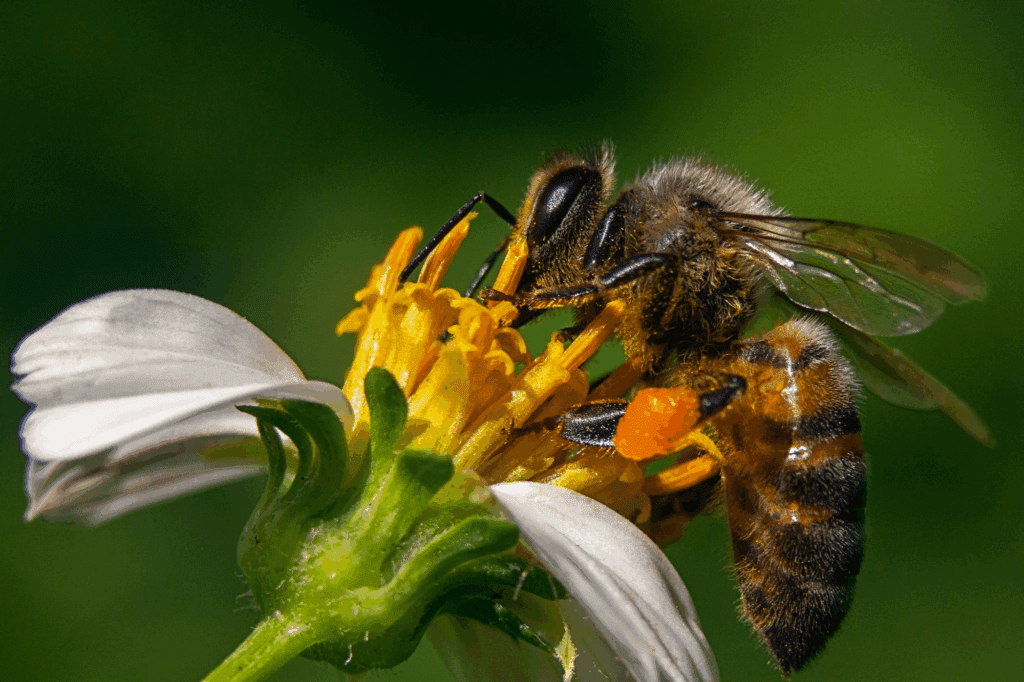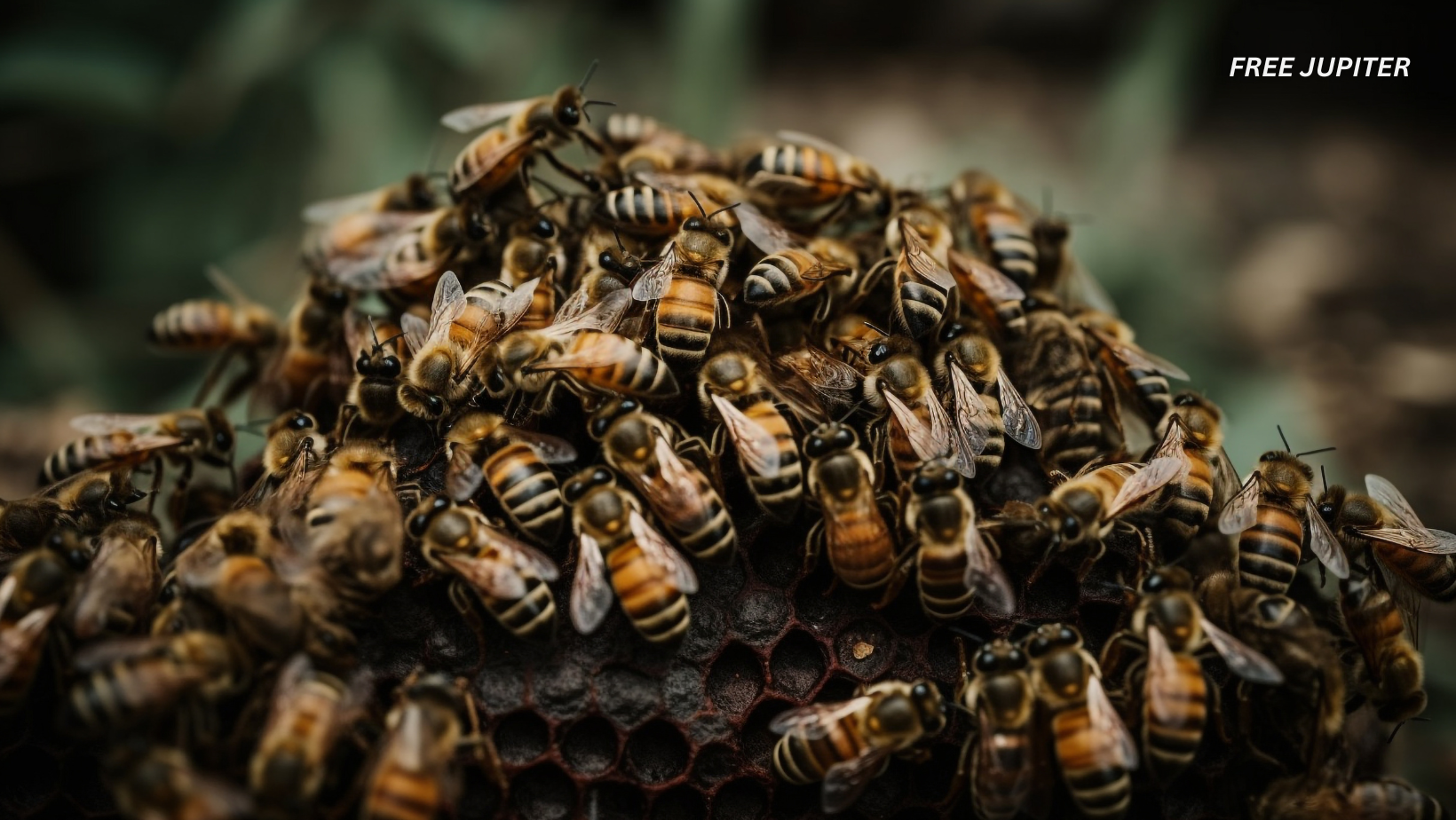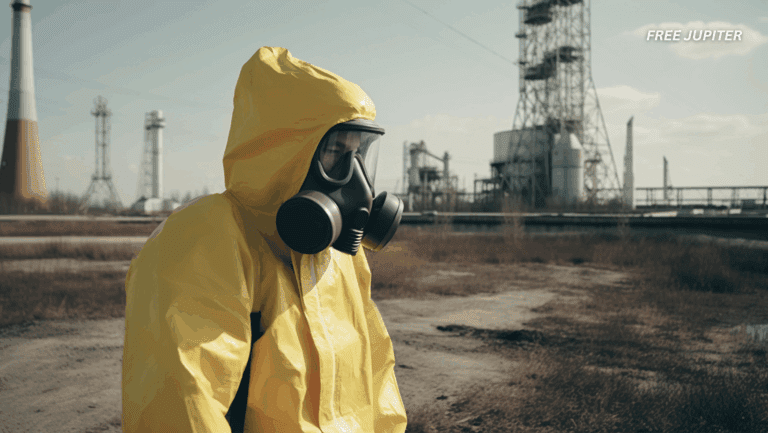Friendly Note: FreeJupiter.com shares general info for curious minds 🌟 Please fact-check all claims—and always check health matters with a professional 💙
Bees are vital for pollination, which is essential for global food production. Yet scientists across the world are raising alarms about an unsettling trend. Bee hives are disappearing at unprecedented rates.
In the last two decades, the number of managed bee colonies has dropped sharply in many countries. This crisis goes beyond honey shortages. It threatens food security, biodiversity, and global ecosystems.
Why Bees Matter More Than Most Realize
Bees are responsible for pollinating about 75 percent of the fruits, vegetables, nuts, and seeds we eat. This includes apples, almonds, avocados, cucumbers, and more. Without bees, grocery store shelves would look alarmingly empty.
Their work supports the reproduction of flowering plants, helping maintain ecological balance and promoting healthy habitats for wildlife. According to the Food and Agriculture Organization of the United Nations, one out of every three bites of food you eat exists because of pollinators like bees. Bees also help support the economy by contributing to crop quality and yield, benefiting farmers and consumers alike.
Understanding Colony Collapse Disorder
One of the most serious issues behind disappearing bee hives is Colony Collapse Disorder, or CCD. This condition occurs when the majority of worker bees in a colony suddenly vanish, leaving behind the queen, immature bees, and ample food supplies. The cause is not one single factor but a complex interaction of many. These include pesticide exposure, diseases, parasites like Varroa mites, poor nutrition, and stress from long-distance transportation of hives.
CCD was first widely reported in the United States in 2006. Since then, beekeepers have continued to report unusually high losses. Some years, beekeepers have lost over 40 percent of their hives. Similar patterns have been seen in parts of Europe, Canada, and Asia. The mystery and scale of CCD continue to fuel intensive research efforts.
Pesticides and Their Impact on Bee Health
A key suspect in the collapse of bee colonies is a class of pesticides called neonicotinoids. These chemicals are widely used in agriculture to protect crops from pests. However, they have been shown to affect bees’ central nervous systems. Even at sublethal doses, these pesticides impair bees’ ability to navigate, forage, and communicate. Bees may leave the hive and be unable to find their way back, resulting in hive failure.
Numerous studies have confirmed the dangers of neonicotinoids. For instance, a major field study in 2017 conducted across Germany, the United Kingdom, and Hungary found significant negative effects on bee populations exposed to treated crops. In response, the European Union banned the outdoor use of three major neonicotinoids in 2018. However, these chemicals are still widely used in other parts of the world, including the United States. Reducing dependency on such pesticides is essential for bee survival.
Varroa Mites: Tiny Parasites, Huge Consequences
Another major threat to bee colonies is the Varroa destructor mite. These parasites latch onto bees and feed on their fat bodies, weakening the insects and transmitting deadly viruses. Infestations can devastate hives quickly if not controlled. The mites are particularly dangerous because they reproduce inside the hive, making them difficult to eradicate completely.
Managing Varroa mites often involves chemical treatments, but these can create further stress on colonies and may even harm bees if used incorrectly. Resistance to treatment has also been rising, forcing beekeepers to constantly adapt their strategies. Better mite management techniques are urgently needed to protect bees.
The Role of Pathogens and Diseases
Bee colonies are susceptible to a range of bacterial, fungal, and viral infections. Nosema is a common fungal parasite that infects the gut of bees and affects digestion and energy levels. Deformed Wing Virus, often spread by Varroa mites, causes bees to emerge with misshapen wings, making flight impossible.
These pathogens can decimate colonies already weakened by other stressors. In many cases, infections do not act alone. Instead, they interact with environmental factors such as poor nutrition and pesticide exposure, creating a perfect storm that overwhelms the colony’s ability to survive. Stronger monitoring and treatment strategies for infections are needed to give bees a fighting chance.
Climate Change and Habitat Loss
Climate change is altering the natural world in ways that deeply affect pollinators. Rising temperatures disrupt the blooming cycles of plants, causing mismatches between when flowers bloom and when bees emerge to pollinate them. Droughts, floods, and severe weather events also reduce the availability of wildflowers, which provide vital nutrition for wild and managed bees.
Habitat destruction is another serious issue. Urban sprawl, monoculture farming, and deforestation have all led to the loss of meadows, forests, and wetlands where bees once thrived. As these habitats disappear, bees must travel further to find food, wasting energy and reducing their survival rates. Restoring and protecting these habitats is key to bee conservation.
Nutrition and Monoculture Farming
A healthy bee diet requires a variety of flowers that bloom at different times. Unfortunately, modern farming often relies on monocultures, which offer only one type of bloom during a short season. After that, there is little food left for bees. This lack of diverse nutrition weakens their immune systems, making them more vulnerable to diseases and environmental stress.
Bees kept near large fields of a single crop, such as almonds or canola, may initially have abundant food. But once the bloom ends, they are left in a floral desert. Beekeepers may try to move hives elsewhere, but the constant relocation causes stress and can lead to lower survival rates. Improving agricultural diversity can help provide better year-round nourishment for bees.
Read More: Bees Can Fly Higher Than Mount Everest – How High They Can Actually Go
The Global Picture: Losses Around the World
This is not a problem limited to one region. In Canada, annual winter losses for bee colonies have exceeded 25 percent in recent years whilst in the United States, beekeepers lost an estimated 48 percent of their colonies in the 2022-2023 season. Among the United Kingdom, wild bumblebee populations have declined sharply since the 1950s. China, hand pollination has become necessary in some areas due to the absence of natural pollinators.
These statistics paint a troubling picture. The world is slowly waking up to the importance of pollinators, but action remains slow and inconsistent. The urgency to protect bees is more critical than ever, as each country faces unique environmental and regulatory challenges.

The Importance of Citizen Science and Local Action
While government policy is important, everyday people can also play a part in protecting bees. Planting pollinator-friendly gardens with a range of native flowers can make a big difference. Avoiding chemical pesticides in home gardens and supporting local organic farms helps reduce the demand for bee-harming chemicals.
Some organizations encourage the installation of bee hotels to support solitary bee species.
Others run community workshops to teach sustainable beekeeping practices. Educating children about pollinators also ensures future generations will value and protect these vital creatures. Community-driven efforts can complement national policies in meaningful ways.
Technological Solutions: Can Innovation Save the Bees?
Several scientific teams are working on high-tech solutions to address bee decline. Some researchers are developing robotic pollinators to assist with crop fertilization in the absence of bees. Others are working on gene editing and vaccine development to boost bee immunity against viruses and parasites.
While these approaches are promising, experts warn they cannot replace natural pollinators. Artificial solutions are expensive and limited in scale. A better approach is to create conditions that allow bees to thrive naturally. Investment in innovation should go hand-in-hand with conservation and policy change.
Policy Changes and International Responses
Governments and international bodies are beginning to respond to the crisis. The European Union’s neonicotinoid ban is one example. In the United States, some states have implemented pollinator protection plans and offered incentives for farmers to create bee-friendly habitats.
The United Nations has declared May 20th as World Bee Day to raise awareness. Several NGOs, such as the Pollinator Partnership and the Xerces Society, work to protect bee habitats and educate the public. Stronger and more unified global policies are essential to protect bees in the long run.
Beekeepers Sound the Alarm
No one feels the crisis more personally than the beekeepers. Many are struggling to stay in business as hive losses mount. Commercial beekeepers who rent out their colonies for pollination services face rising costs and unpredictable outcomes. Hobbyist beekeepers report fewer healthy hives year after year.
Some beekeepers have become activists, testifying before government panels and participating in lawsuits against chemical manufacturers. Their firsthand experience provides crucial insight into what is happening on the ground. Supporting beekeepers is a key component of sustaining bee populations.
The Ripple Effect on Global Agriculture
The disappearance of bees affects more than just honey production. Crops that depend on pollinators have higher yields and better quality when bees are present. Without them, production falls, prices rise, and the variety of available foods shrinks. Livelihoods of farmers are also affected, particularly in developing countries where alternatives to natural pollination are not affordable.
Almonds, for example, require bees for nearly every stage of production. The almond industry in California rents more than two million hives each year. If those hives become unreliable, the entire supply chain is at risk. The interdependence between agriculture and bees cannot be ignored.
What Can Be Done Right Now
Experts agree that reversing bee decline will take time and effort on multiple fronts. Key steps include reducing pesticide use, planting pollinator-friendly crops, improving disease monitoring, and supporting research into bee health. Individuals can help by planting wildflowers, reducing lawn space, and avoiding synthetic garden chemicals.
Supporting local beekeepers by buying their honey and beeswax products also makes a difference. Advocacy is equally important. Calling for better environmental policies and funding for pollinator research helps keep the issue in public view. Small actions can lead to significant change when adopted widely.
A Call for Urgency and Unity
Bee decline is not just an insect problem. It is a human problem. What is at stake is nothing less than the stability of our food systems and the richness of our natural environment. The science is clear. The warnings are loud. The solutions are known.
But without swift and coordinated action, the silent disappearance of bee hives will continue. By working together, humans can ensure that these essential pollinators survive, thrive, and keep doing what they do best, one flower at a time. A world without bees is not just unlikely, it is unsustainable.










